Tina Maze
Tina Maze interview: “Nobody with easy lifestyles can know what success tastes like.”
Possibly the most successful alpine skier of all time, Tina Maze talks about her very unique trail to victory and tells us what it takes to be a record breaker.
Tina Maze
Tina Maze interview: “Nobody with easy lifestyles can know what success tastes like.”
Possibly the most successful alpine skier of all time, Tina Maze talks about her very unique trail to victory and tells us what it takes to be a record breaker.
“Learn from others, but do it your way!”
By Paul McGee, Head Feature Writer. May 25 2019
“Don’t do it,” Tina Maze cautions me.
I’ve asked the Slovenian alpine ski legend what advice she might offer someone wanting to follow in her footsteps.
I’m trying to understand a bit about the Tina Maze ski model. At first I assume her reply indicates some level of self-preservation: there’s only one Tina Maze, don’t tread on my toes. But her counsel turns out to be among the most sage – and selfless – instructions I’ve ever heard.
Tina Maze is the most successful alpine skier to emerge from the talent pool that is Slovenia. In fact she is arguably the most successful alpine skier of all time (she holds the record for most points amassed in a single FIS World Cup season) and started skiing on the slopes of Črna na Koroškem, a small but mighty ski resort tucked up against the Austrian border. The resort has just 3km of slope serviced by a single 800m drag lift. And yet this tiny spot on the skiing map has produced no fewer than 8 Winter Olympians across every discipline from slalom to cross country to ski jumping. There couldn’t have been a more inspiring embryo in which to nurture the skills of a young Tina Maze. Črna na Koroškem evolved on a mantra that says: take a slope, add snow, and we’ll create champions to rival the best of them.
“My village has a long tradition in skiing,” Tina says. “Everyone learns to ski, and I won my first race there. Success brings happiness and I loved being on top. Watching champions before me, who were warmly welcomed back home because of success, left a strong impact on me. I wanted to be active as a child so I probably overstepped the recreation mode pretty soon. It all happened very spontaneously.”

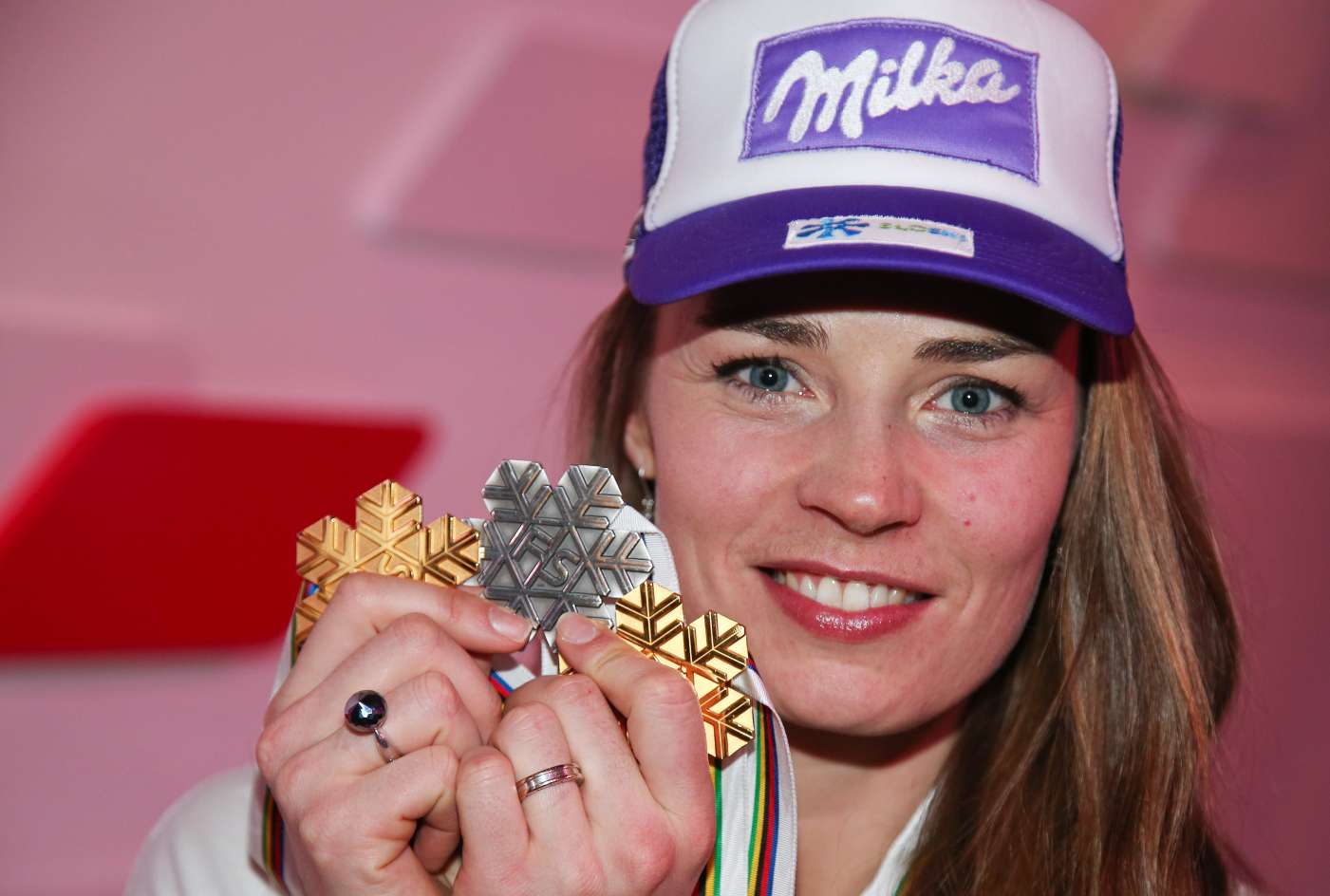
Enveloped in Črna na Koroškem’s competitive surroundings, it’s not surprising that Tina Maze moved away from recreation level skiing at such a young age. At five, she won her first organized race. The medal was made of wood, but the prospect of precious metal in the future had been established.
Aged just 15, Tina Maze debuted on the FIS World Cup circuit, competing in the giant slalom at Maribor in her home nation. It would mark a significant chapter in her career for two reasons: Maribor would be the scene of Tina’s last race as a competitive skier in 2017, but more significantly in that 1999-2000 season, Austrian Herman Meier laid down a tally of 2000 points, setting the record for most points gained in a FIS World Cup year. His achievement looked to be set in stone, carved insuperably into the annals of alpine history. And so it would remain – for another 13 years…
Competing then as part of the Slovenian national team, the young Tina Maze made steady progress. Over the following years she delivered more points, more podiums, and gradually climbed the rankings. She was improving, but her rise through the echelons of alpine skiing was hardly meteoric and gave no hint of the luminary she was to become.
Tina’s ascent peaked in 2005 and then, in 2006, her star began to fall. In the words of her compatriot and 1994 Olympic bronze medallist Jure Košir, Tina Maze had become “lost in stagnation.” The cause, as much as anything else, was reportedly the Slovenian Skiing Federation, in which cracks were appearing. Tina had finished as high as 10th in the 2005 World Cup season but she dropped to 14th, 30th and 28th in the proceeding years. Casting an eye over the appendix of her results, those seasons are just a blip on the sparkling highlight reel of Tina Maze’s career. Slaving away in the moment, they must have been interminable months of attrition on the body and soul of the future record breaker.
But those lean seasons were also the catalyst for one of the most inspiring chapters in Tina’s story. The Tina Maze Ski Model of Progress needed a kick and it was about to get just that: frustrated with her own progress and hampered by the floundering national team, she quit.
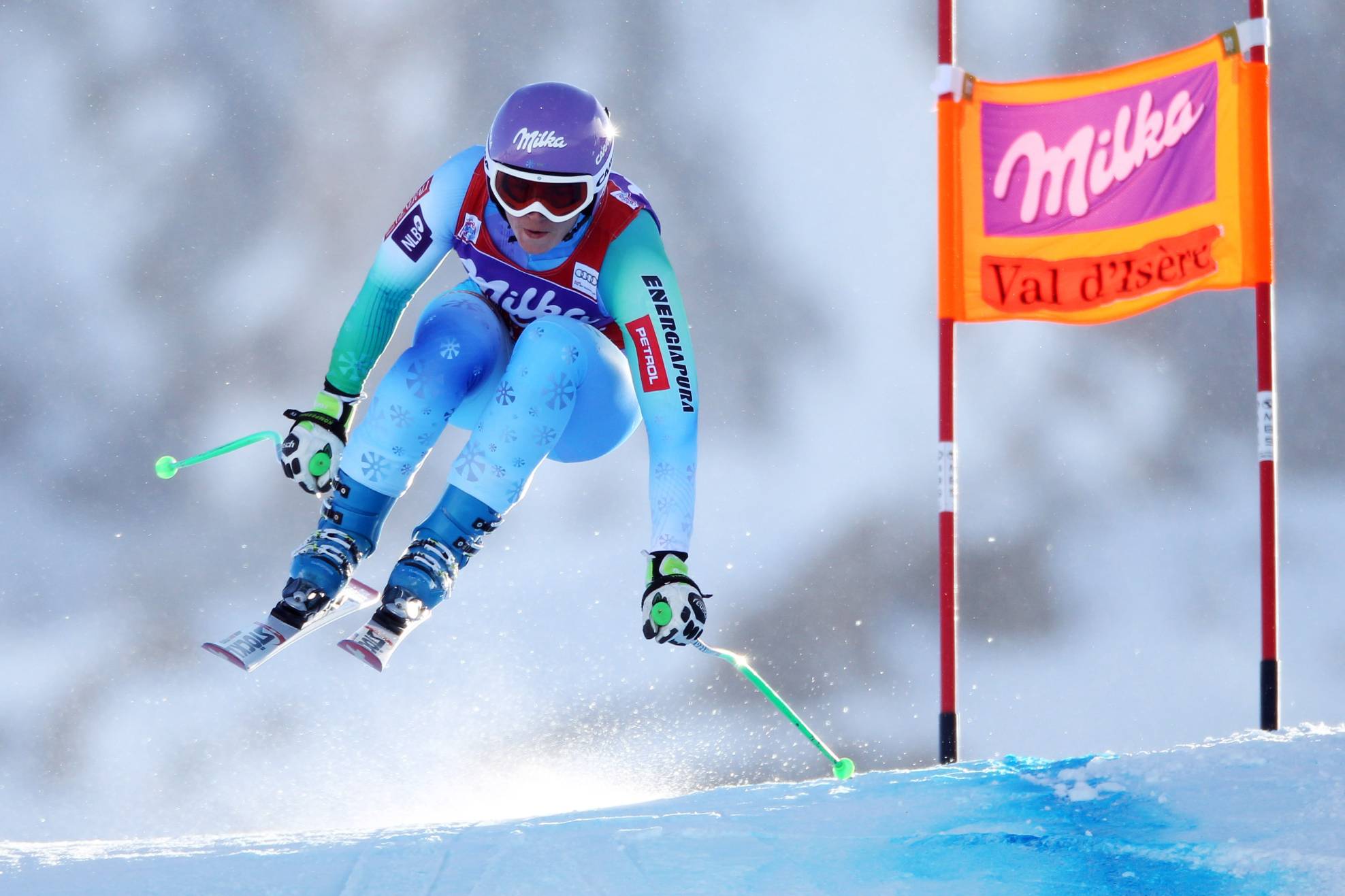
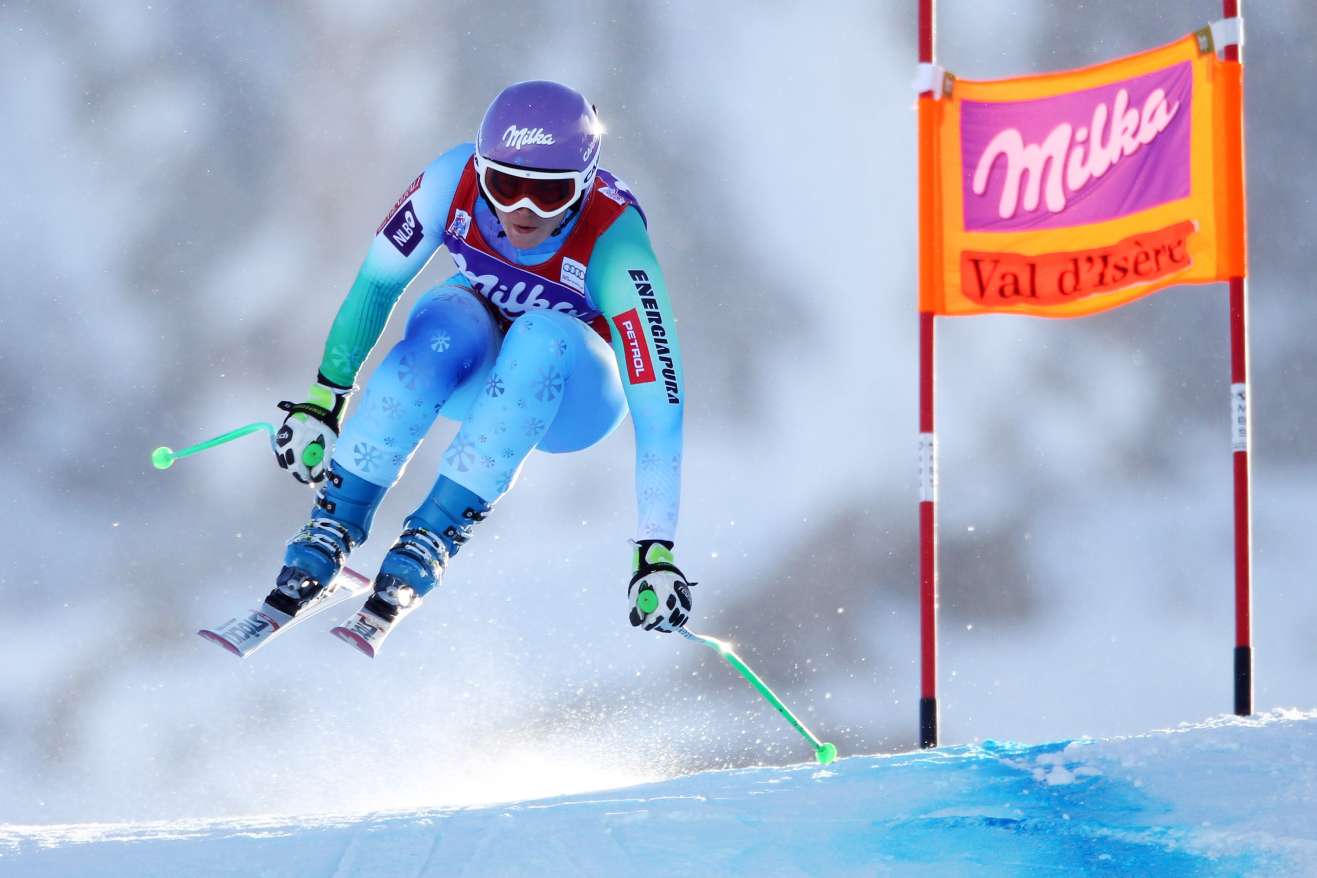
Together with her partner and coach Andrea Massi, she formed the independent ‘Team to aMaze’. That turning point remains the proudest moment of her career, and its significance is not lost on her.
“These successes would never happen if I wouldn’t have decided to create my own private team,” she tells me. “Andrea had this idea and I started to believe in it more and more. To do something that the Federation didn’t agree with at the beginning and everyone thought I was crazy – they were creating problems on every step of the way – is my biggest achievement for me. All the success happened thanks to this decision.”
Tina is not the only skier who’s had gripes with the Slovenian Skiing Federation. In his 2015 interview, Košir says, “Slovenian alpine skiing was well-known for its expertise, professionalism and innovation for many years. I think we lost this over the last 10 -15 years.”
Athletes, the true legends of their sports, must have self-belief even when things aren’t going their way. For Tina Maze and Andrea Massi, travelling in their own van from race to race and with the Federation no longer on-side, it took incredible strength and an iron-clad determination to maintain the effort and drive to compete on the world stage. Some might have seen the breakaway as a gamble, but it paid off: In the 2008-2009 season ‘Team to aMaze’ scored 852 World Cup points for a thus-far career best of 6th place. Tina added her first World Championship medal – giant slalom silver – in Val d’Isere.
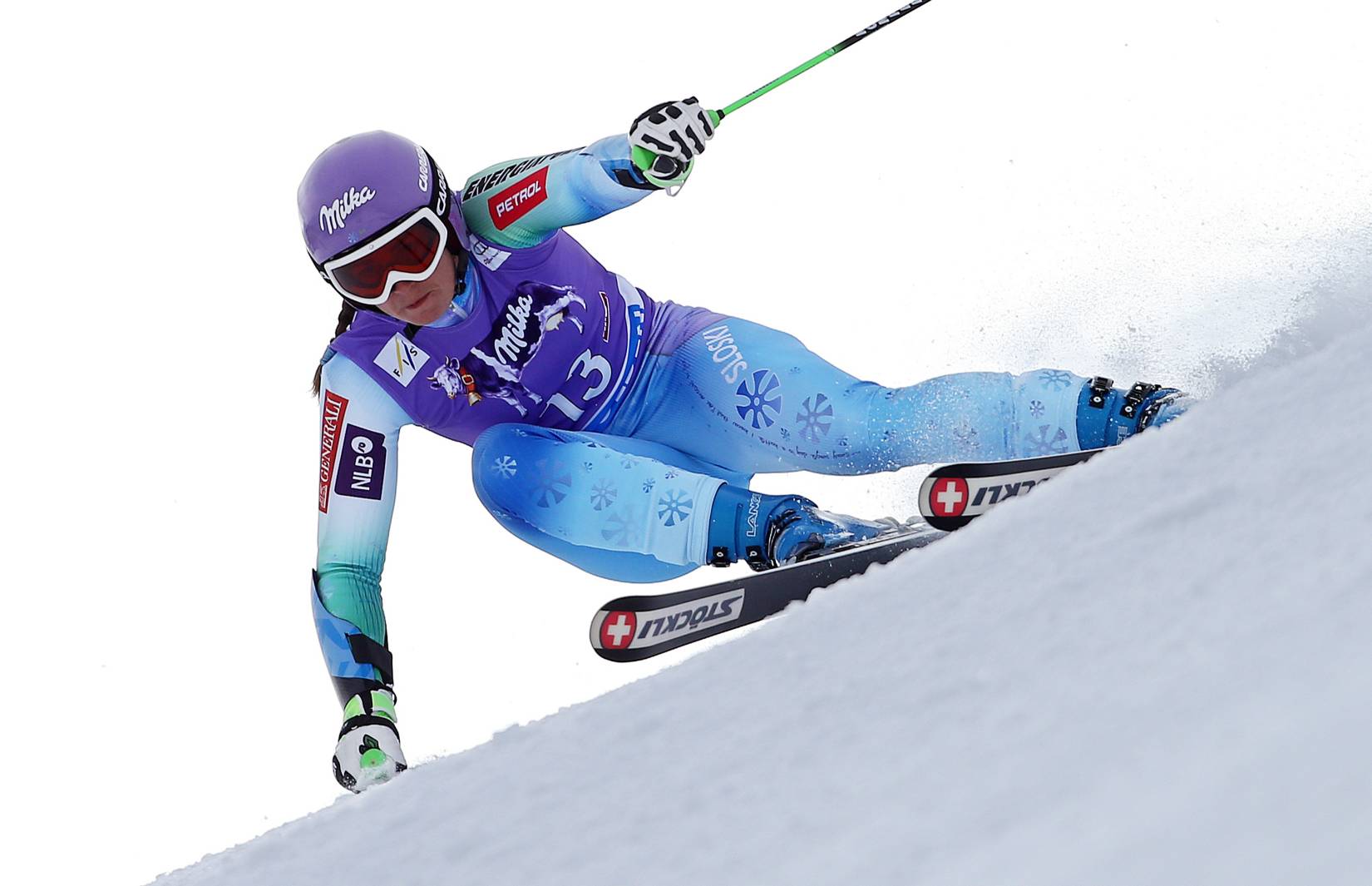

“My career turned out different than I ever imagined. I wanted to stop in 2006, but with Andrea Massi we found a good solution to keep on working,” she says.
Other changes were afoot. Or underfoot.
“The same period I also changed skis. Everything was different for me in that time. I would say no comfort zone. Stöckli had great persons there – Beni [Stöckli], senior and Walter Reusser [then Racing Director, now Chief Operating Officer] – who decided to sign with me. I think the biggest advantage from Stöckli is being small and excellent. The quality is a synonym of this brand. But we had to work a lot on the material. We managed to push each other to a higher level.”
Swiss manufacturer Stöckli has 80 years of innovation behind it and has supplied skis to Mike Schmid, Ashleigh McIvor, Viktoria Rebensburg, Ambrosi Hoffman and Fabienne Suter. Founded by Josef Stöckli in the 1930s, the company has developed a philosophy for intensive, quality-led production that goes back the better part of a century.
But, Tina Maze tells me, “Nobody can live off their previous success – every year you need to do more.”
Team to aMaze kept doing more. They kept on working – and kept on winning. In 2010 Tina finished the World Cup season in 4th place but the standout was the Vancouver Winter Olympics that year, where she won silver in both super giant and giant slalom.
The little independent team had the wind in its sails now. Tina notched up 1139 points in the 2011 season for 3rd place, bettering that the following year to take 2nd behind Lindsey Vonn. But the best was yet to come. Team to aMaze were about to hone the Tina Maze ski model to its sharpest point. 2013 turned out to be not just her best year, but the best year in the history of FIS World Cup skiing. Herman Maier’s record of 2000 points thirteen years previously was obliterated as Tina Maze finished the FIS World Cup season with a staggering tally of 2414. She broke countless records that season: her score represented the greatest ever difference between 1st and 2nd place – in fact she scored more points that the 2nd and 3rd place finishers amassed between them; she stood on the podium a record 24 times; she was – and remains – the only woman to stay at the top of the rankings throughout the season. As well as that, Tina Maze won gold and two silvers at the World Championships in Austria and was awarded Skieur d’Or by the International Association of Ski Journalists.
To be so successful in any year, against any competition, is an outstanding feat in itself. To do it against the sport’s big hitters like Lindsey Vonn, Maria Höfl-Riesch, Anna Veith, Julia Mancuso, Mikaela Shiffrin – it’s almost ridiculous.
“To come to the level I had in the season 2012/2013 was a lot of team work,” Tina says. “I had talent, but talent without good work goes away. I always wanted to win an overall globe but I needed to change a lot. I was working with my team on myself all the time.”
Quite simply she says, “I changed. I adapted. I learned.”


After her groundbreaking 2013 season, that great four year cycle had completed another revolution and the Sochi Winter Olympics were fast approaching. The season got off to a slow start, partly down to a change of coach when Walter Ronconi replaced Livio Magoni, but in January Mauro Pini was brought on board – just in time. Tina Maze came home from Sochi with two golds – one for giant slalom and the other, perhaps most impressively for someone who’d spent most of her career weaving round gates, for downhill.
She was exhausted and finished the season in 4th place, but was back for 2015 in one of the most exciting World Cup tussles in recent years, battling with Anna Fenninger (now Veith) in a back and forth contest in which Fenninger eventually emerged victorious. Tina sat out the 2015-2016 season and then announced her retirement, completing her last race at the 2017 World Cup giant slalom in Maribor. It was a most appropriate setting for her farewell bow: Maribor was the scene of Tina Maze’s first World Cup race back in 1999.
In those eighteen years Tina Maze went through every nadir and every zenith a competitive skier could experience. She toiled to victory and carved herself a place in skiing history. Her position as one of the greatest (and according to some statistics, the greatest) of all time, was hard won. Nevertheless, each setback was vital.
“Those moments are key to success,” she tells me. “Nobody with easy lifestyles can know what success tastes like. Intensity of life makes life more full. From fall-downs you learn, from victories you don’t learn much.”
As I reflect on Tina Maze’s words I’m left thinking that she could write the script for success, then I realise that she actually has. Her biography was published in 2017.
Not that Tina Maze would counsel anybody to copy her mind you:
“Don’t do it,” she tells me when I ask what advice she would give to someone looking to follow in her footsteps. “Trust your instincts. There are many similar moments for us but everyone is different underneath so we live it differently.” Then she adds, “Learn from others, but do it your way!” referencing the pop-rock single she released in 2012, ‘My Way is My Decision.’
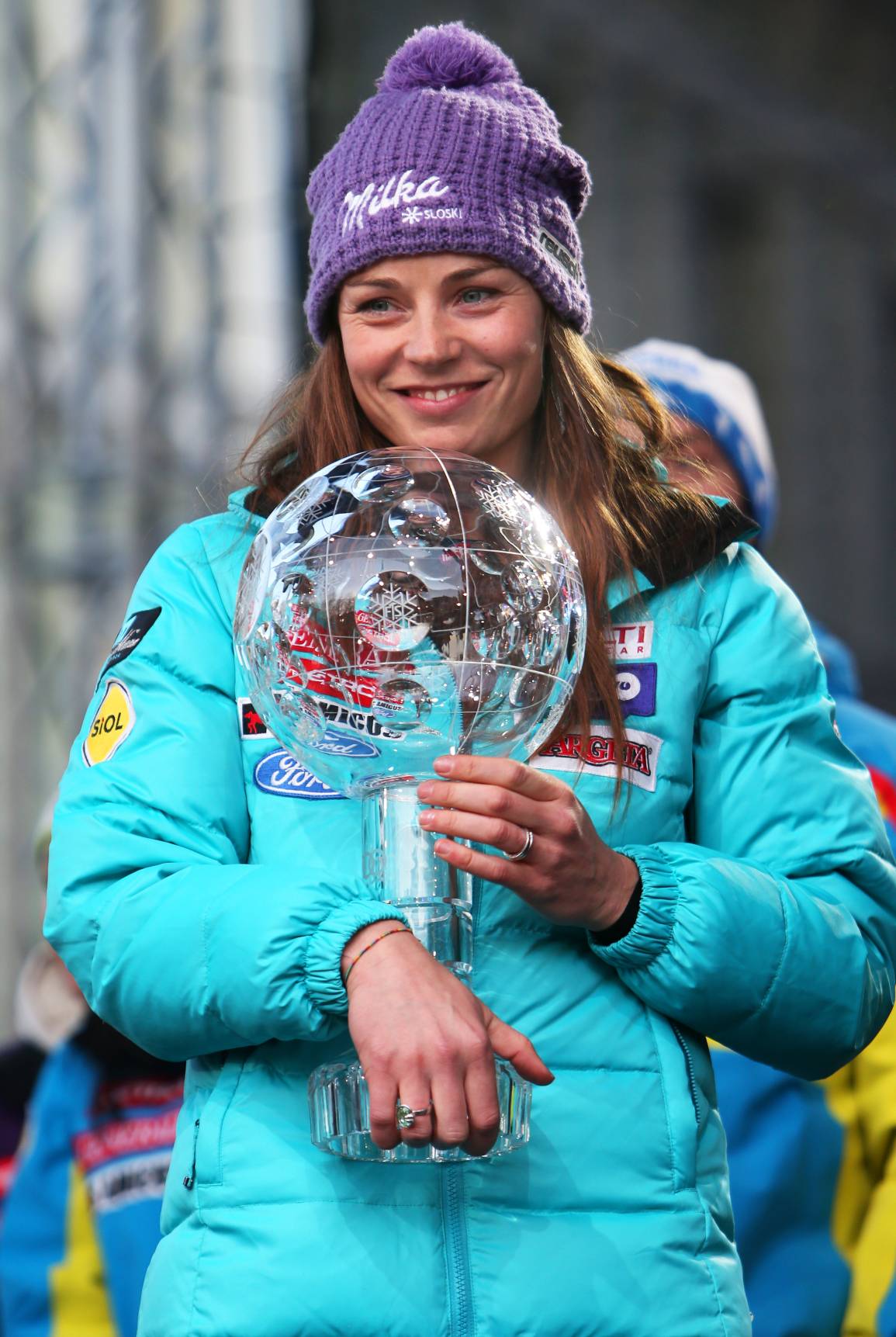
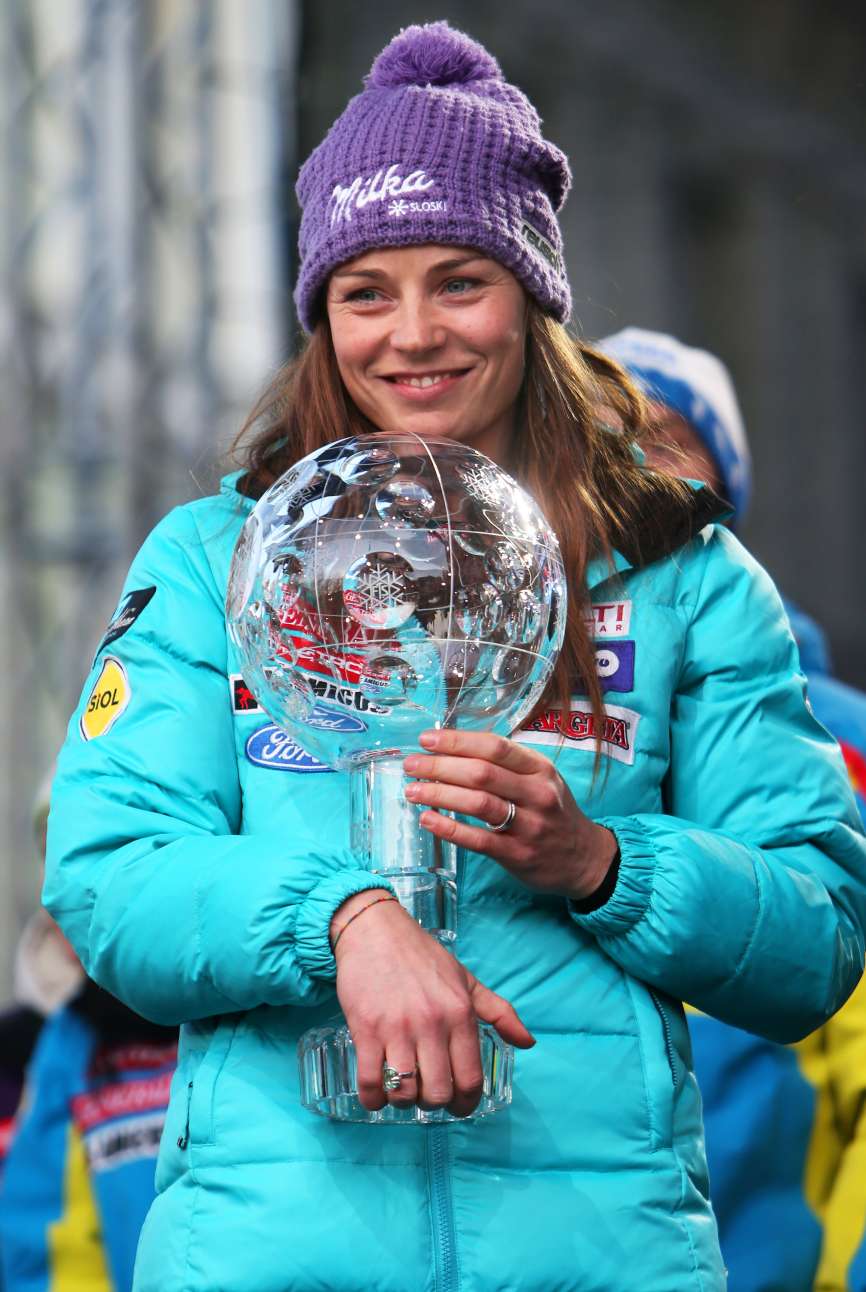
My thanks to the most successful FIS World Cup alpine skier of all time, Tina Maze for her time. Thanks also to Anna Marconi of GPS Performance for arranging this interview.
You can keep up with Tina Maze in her new life, which is sure to be every bit as impressive as it’s been up to now, at the following feeds:
Tina Maze Twitter: @tinamaze
Tina Maze Instagram: @tinamaze83
Tina Maze Facebook: /tinamaze
Related article: Julia Mancuso
